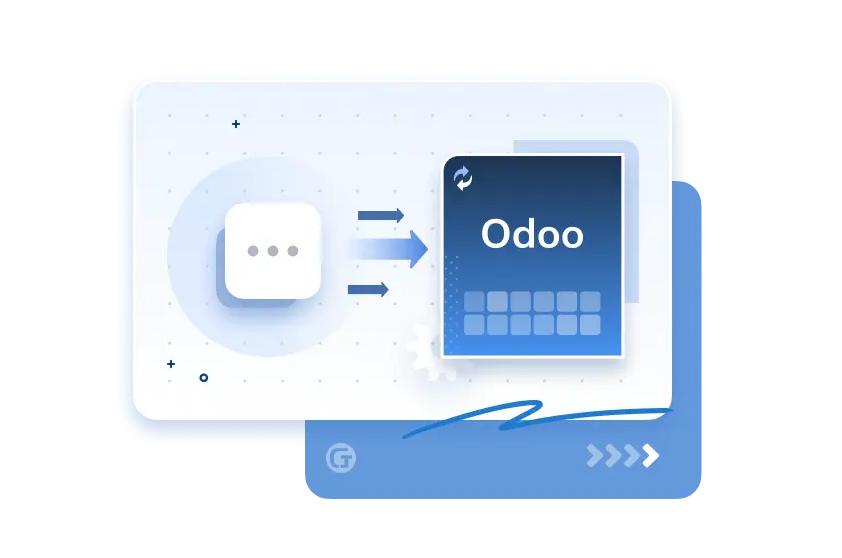As businesses across industries look for agile and scalable ERP systems, Odoo ERP stands out as a powerful and customizable solution. Its modular structure and open-source architecture make it highly adaptable to individual business needs. However, with great flexibility comes a significant margin for error—especially when undertaking an Odoo customization project.
Despite the numerous success stories, many companies fall into common traps that lead to project delays, increased costs, and underperforming systems. In this article, we’ll explore the most common mistakes businesses make during Odoo ERP customization projects, how to avoid them, and why working with expert odoo customization services can be a game changer.
Understanding the Importance of Odoo Customization
Before diving into the common pitfalls, it’s important to understand why Odoo customization is necessary in the first place.
Odoo comes with a wide array of out-of-the-box functionalities covering CRM, accounting, inventory, HR, e-commerce, and more. However, every business has unique workflows, goals, and compliance requirements. Customization allows companies to:
- Adapt the system to unique business processes
- Enhance productivity by automating specific workflows
- Integrate third-party systems and tools
- Improve user experience and interface
- Meet local legal and tax regulations
Yet, when not done properly, these benefits can quickly turn into complications. Let’s explore how to avoid this.
1. Lack of Clear Objectives and Scope
🔻 The Mistake:
Jumping into customization without a well-defined set of business goals and system requirements.
✅ How to Avoid It:
Start by clearly identifying your business needs, current process gaps, and desired outcomes. Define a project scope document that outlines:
- Which modules need customization
- Functional and technical requirements
- Success metrics
- Timeline and budget constraints
Why it matters: Without clear goals, your odoo customization project may go off track, leading to feature creep and wasted resources.
2. Customizing Too Early
🔻 The Mistake:
Businesses often start customizing Odoo even before they’ve fully understood what the default system offers.
✅ How to Avoid It:
Thoroughly evaluate and test Odoo's native functionalities first. You may find that some features already meet your requirements without modification. Only customize when it adds real value or solves a specific challenge.
Tip: Use odoo erp customization services that include functional consultants who can help you understand what’s available by default.
3. Ignoring Best Practices
🔻 The Mistake:
Implementing custom code that deviates from Odoo’s framework best practices can lead to upgrade issues, performance lags, and compatibility problems.
✅ How to Avoid It:
Stick to modular development, follow the Model-View-Controller (MVC) architecture, and document all custom code. Regular code reviews and testing should be a mandatory part of the development process.
Use reliable odoo customization services with proven technical expertise to ensure your customizations align with industry standards.
4. Over-Customizing the System
🔻 The Mistake:
Trying to mold Odoo into something it's not meant to be by adding excessive custom features that mimic other software or old legacy systems.
✅ How to Avoid It:
Focus on optimizing and streamlining processes rather than replicating outdated ones. If you're migrating from another ERP, use this opportunity to rethink and improve business processes rather than simply port them.
5. Poor User Involvement
🔻 The Mistake:
Customizations are carried out based on assumptions without involving the actual end-users, leading to systems that are hard to use or irrelevant to the workflow.
✅ How to Avoid It:
Engage key users early in the customization process. Involve them in requirement gathering, testing phases, and feedback cycles.
User involvement ensures that your odoo customization delivers real-world value.
6. Neglecting Integration Requirements
🔻 The Mistake:
Customizing Odoo without planning for integration with existing systems (e.g., CRM, eCommerce platforms, payment gateways).
✅ How to Avoid It:
Make integration planning a core part of your project strategy. Identify APIs, data formats, synchronization needs, and security protocols early on.
Expert odoo customization services often include system integration specialists who ensure seamless communication between platforms.
7. Underestimating the Testing Phase
🔻 The Mistake:
Skipping thorough testing or only performing it at the final stages.
✅ How to Avoid It:
Perform iterative testing after every major development milestone. Include functional testing, unit testing, and user acceptance testing (UAT). Always test custom features in a sandbox or staging environment before going live.
Robust testing helps catch issues early and ensures your odoo customization meets business requirements.
8. Not Planning for Future Upgrades
🔻 The Mistake:
Hard-coding customizations that are not compatible with future Odoo versions.
✅ How to Avoid It:
Use modular and upgrade-friendly coding practices. Document your customization thoroughly so future developers can understand and adapt it.
Tip: Partner with a provider offering long-term odoo erp customization services that include upgrade management.
9. Choosing the Wrong Customization Partner
🔻 The Mistake:
Hiring developers or freelancers without proper Odoo experience or choosing a vendor based purely on cost.
✅ How to Avoid It:
Select an Odoo partner or service provider with verified Odoo expertise, positive client reviews, and a strong portfolio. Ensure they offer full-cycle odoo customization services—from analysis and design to implementation and support.
Visit platforms like GloriumTech for trusted ERP customization support.
10. Neglecting Change Management and Training
🔻 The Mistake:
Deploying a newly customized Odoo system without preparing your team to use it effectively.
✅ How to Avoid It:
Include change management as part of your project roadmap. Offer training sessions, create user manuals, and provide ongoing support post-deployment.
The success of your odoo erp customization services depends as much on user adoption as on technical implementation.
11. Failing to Budget Realistically
🔻 The Mistake:
Assuming customization costs will be low or fixed without accounting for complexities, scope changes, or post-deployment support.
✅ How to Avoid It:
Work with your Odoo partner to create a detailed cost breakdown. Include room for contingencies, change requests, and maintenance.
Cost transparency is a hallmark of reliable odoo customization services.
12. Inadequate Documentation
🔻 The Mistake:
Skipping documentation for custom modules, workflows, or system changes can make future upgrades or troubleshooting a nightmare.
✅ How to Avoid It:
Insist on full technical documentation as part of the project deliverables. Good documentation will save time, money, and headaches in the long run.
Final Thoughts
Odoo ERP is a dynamic, powerful tool that can transform how your business operates. But the key to unlocking its full potential lies in smart, strategic customization.
Avoiding these common mistakes can significantly increase your chances of success. Whether you’re a manufacturer streamlining supply chain workflows, a retailer optimizing point-of-sale systems, or a healthcare provider managing patient records, the right odoo customization can give you a competitive edge.
Investing in expert odoo customization services is not just about writing code—it’s about understanding your business, aligning technology with your goals, and preparing for growth.

